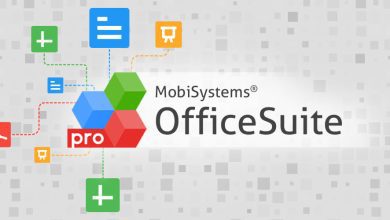How to Plan for Retirement in Your 20s and 30s – InvestMent Club
How to Plan for Retirement in Your 20s and 30s Planning for retirement in your 20s and 30s may seem early, but starting early provides a significant advantage due to the power of compounding. Here are steps you can take to plan for retirement during these early stages of your career:
Retirement may seem far off when you’re in your 20s or 30s, but it’s never too early to start planning for it. In fact, the earlier you start, the better off you’ll be in the long run. In this article, we’ll explore some tips on how to plan for retirement in your 20s and 30s.
Start Saving Early
The most important thing you can do to plan for retirement is to start saving early. The earlier you start saving, the more time your money has to grow. Even if you can only afford to save a little bit each month, it’s still better than saving nothing at all. Make it a habit to save a portion of your income each month, even if it’s just a small amount.
1. Set Clear Financial Goals:
- Define your short-term and long-term financial goals, including how much you want to save for retirement. Understand your desired lifestyle in retirement, and estimate the expenses associated with it.
2. Create a Budget:
- Develop a budget that allocates a portion of your income to savings and investments. Be disciplined about living within your means to maximize your ability to save for the future.
3. Establish an Emergency Fund:
- Before focusing heavily on retirement savings, build an emergency fund to cover three to six months’ worth of living expenses. This fund acts as a financial safety net for unexpected expenses.
Take Advantage of Retirement Accounts

If your employer offers a 401(k) plan, make sure to take advantage of it. A 401(k) allows you to contribute pre-tax income to your retirement savings, and many employers also offer matching contributions. This means that your employer will contribute a certain amount of money to your 401(k) for each dollar you contribute, up to a certain limit. This is essentially free money, so make sure to contribute enough to get the full matching contribution.
ATG Links 8$ CPM Best URL Shortener Earning Website
If your employer doesn’t offer a 401(k), consider opening an individual retirement account (IRA). There are two types of IRAs: traditional and Roth. With a traditional IRA, you contribute pre-tax income and pay taxes on the money when you withdraw it in retirement. With a Roth IRA, you contribute after-tax income and pay no taxes on the money when you withdraw it in retirement. Both types of IRAs have their own benefits and drawbacks, so do your research and choose the one that’s right for you.
insurance,life insurance,health insurance,car insurance,insurance agent,whole life insurance,auto insurance,sell insurance,insurance sales,insurance leads,insurance career,cheap car insurance,how to sell insurance,life insurance sales,insurance marketing,insurance telesales,sell insurance from home,insurance agent training,insurance sales training,home insurance,term insurance,insurance lead generation,insurance claim,what is insurance
4. Take Advantage of Employer-Sponsored Retirement Plans:
- Contribute to your employer-sponsored retirement plan, such as a 401(k) or 403(b). Take advantage of any employer matching contributions, as this is essentially free money.
5. Understand Investment Basics:
- Educate yourself on the basics of investing. Learn about asset classes, risk tolerance, and the power of compounding. Consider a diversified portfolio that aligns with your long-term goals.
6. Open an Individual Retirement Account (IRA):
Top 10 Tourist Destinations in the USA
- Open a Roth IRA or Traditional IRA to supplement your employer-sponsored plan. IRAs offer tax advantages and can provide additional flexibility in your investment choices.
Be Mindful of Your Spending

One of the biggest obstacles to saving for retirement is overspending. It’s important to be mindful of your spending habits and avoid unnecessary expenses. This doesn’t mean you can’t enjoy life, but it does mean you should prioritize your retirement savings over things like eating out or buying expensive clothes. Try to find a balance between enjoying your life now and planning for your future.
7. Increase Contributions Over Time:
- Gradually increase your contribution rate as your income grows. Aim to contribute at least 15% of your income to retirement savings, including contributions to employer plans and IRAs.
8. Automate Contributions:
- Set up automatic contributions to your retirement accounts. Automation ensures consistency and helps you avoid the temptation to spend money that could be saved for retirement.
Best Loan companies in USA
9. Review and Rebalance Your Portfolio:
- Regularly review your investment portfolio to ensure it aligns with your risk tolerance and long-term goals. Rebalance as needed to maintain a diversified and suitable asset allocation.
10. Consider Long-Term Investments:
- Understand that retirement planning is a long-term endeavor. Avoid making impulsive decisions based on short-term market fluctuations.
Top US car insurance
11. Stay Informed and Seek Professional Advice:
- Stay informed about changes in the financial landscape and retirement regulations. Consider consulting with a financial advisor to ensure your strategy is on track.
Invest Wisely

Investing can be a great way to grow your retirement savings, but it’s important to do so wisely. If you’re not comfortable making investment decisions on your own, consider working with a financial advisor. They can help you create an investment strategy that aligns with your goals and risk tolerance. It’s also important to diversify your investments and not put all your eggs in one basket.
12. Pay Off High-Interest Debt:
- Prioritize paying off high-interest debt, such as credit cards, as it can significantly impact your ability to save and invest for retirement.
-
Top US Life Insurance
13. Take Advantage of Tax Benefits:
- Be aware of tax advantages associated with retirement accounts. Contributions to traditional retirement accounts may be tax-deductible, and qualified withdrawals from Roth accounts can be tax-free.
14. Plan for Health Care Costs:
- Factor in potential health care costs in retirement. Consider contributing to a Health Savings Account (HSA) if you have access to one.
15. Regularly Reassess Your Plan:
- Life circumstances and financial goals may change over time. Regularly reassess your retirement plan and make adjustments as needed.

Starting early and being consistent with your savings and investment strategy are key factors in building a secure retirement fund. The habits you establish in your 20s and 30s can have a profound impact on your financial well-being in later years.
Starting an online business in the USA
In conclusion, planning for retirement in your 20s and 30s is crucial to ensure you have enough money to live comfortably in your golden years. Start saving early, take advantage of retirement accounts, be mindful of your spending, and invest wisely. By following these tips, you’ll be on the path to a secure retirement.



